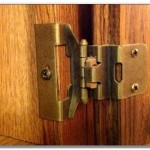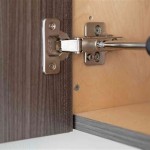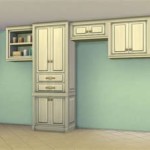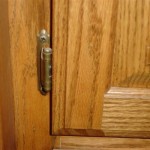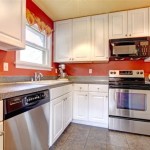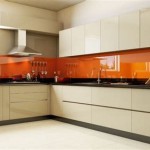Mold Behind Kitchen Cupboards: A Comprehensive Guide
Mold growth in residential properties is a common concern, particularly in areas prone to moisture. Kitchens, with their frequent use of water and varying temperatures, present ideal conditions for mold proliferation. One area often overlooked but highly susceptible is the space behind kitchen cupboards. Understanding the causes, identification methods, health implications, and remediation strategies for mold in this location is crucial for maintaining a healthy living environment.
Causes of Mold Growth Behind Kitchen Cupboards
Several factors contribute to the development of mold behind kitchen cupboards. The primary driver is moisture accumulation. This moisture can originate from various sources, including:
Plumbing Leaks: A common cause is leaky plumbing within the walls or under the sink. Even small, slow leaks can provide enough moisture over time to foster mold growth. These leaks may be from supply lines to the faucet, drain pipes, or the dishwasher connection. The enclosed space behind the cupboards restricts airflow, preventing the moisture from evaporating quickly, thereby compounding the problem.
Condensation: Condensation occurs when warm, moist air comes into contact with a cold surface. Behind kitchen cupboards, this can happen when the exterior wall is inadequately insulated. During colder months, the temperature difference between the warm interior air and the cold wall can lead to condensation, providing a steady source of moisture for mold to thrive.
Poor Ventilation: Inadequate ventilation in the kitchen can exacerbate moisture buildup. Activities like cooking and dishwashing release significant amounts of water vapor into the air. Without proper ventilation, this moisture can accumulate and penetrate the spaces behind the cupboards, especially if there are gaps or cracks in the wall.
Spills and Splashes: Everyday kitchen activities can lead to spills and splashes that are not immediately cleaned. Liquid penetrating the joints between the countertop and backsplash or seeping under the cupboards can create a damp environment conducive to mold growth. These spills, often containing organic matter like food particles, provide a nutrient source for mold to develop.
Construction Defects: In some instances, construction defects can contribute to the problem. Improperly sealed walls, inadequate vapor barriers, or poor flashing around windows can allow moisture to penetrate the wall cavity behind the cupboards. These defects can remain undetected for extended periods, leading to significant mold growth before any visible signs appear.
Identifying Mold Behind Kitchen Cupboards
Detecting mold behind kitchen cupboards can be challenging as it is often hidden from plain sight. However, several indicators can suggest its presence:
Musty Odor: A persistent, musty odor in the kitchen, particularly near the sink or cupboards, is a strong indicator of potential mold growth. This odor is caused by microbial volatile organic compounds (MVOCs) released by mold as it breaks down organic matter. The odor may be more pronounced when the humidity is high or after running the dishwasher or sink.
Visible Mold: Although mold is often hidden, visible signs may appear in certain areas. Look for discoloration, staining, or fuzzy growth on the wall behind the cupboards, especially along the back corners or around plumbing pipes. Check under the sink cabinet for signs of water damage or visible mold growth on the bottom of the cabinet or on the surrounding walls.
Water Stains: Evidence of water damage, such as water stains on the wall, peeling paint, or bubbling wallpaper, can indicate a moisture problem that may have led to mold growth. These stains often appear as dark or discolored areas on the wall and may be accompanied by a damp or spongy texture.
Allergic Symptoms: Unexplained allergic symptoms, such as sneezing, coughing, runny nose, itchy eyes, or skin rashes, may be triggered by mold spores circulating in the air. If these symptoms worsen when spending time in the kitchen, it could indicate the presence of mold. Pre-existing respiratory conditions, like asthma, may also be exacerbated by mold exposure.
Material Deterioration: Mold feeds on organic materials, such as wood, drywall, and paper. Look for signs of deterioration, such as warped wood, crumbling drywall, or peeling wallpaper behind the cupboards. These signs suggest that mold has been actively breaking down the materials.
Professional Inspection: If any of the above indicators are present, consider hiring a professional mold inspector. A certified mold inspector can use specialized equipment, such as moisture meters and air sampling devices, to accurately assess the extent of the mold problem and identify the source of moisture.
Health Implications of Mold Exposure
Exposure to mold can have various health effects, depending on the type of mold, the duration of exposure, and the individual's sensitivity. Some common health implications include:
Allergic Reactions: Mold spores are common allergens that can trigger allergic reactions in sensitive individuals. Symptoms may include sneezing, runny nose, itchy eyes, skin rashes, hives, and difficulty breathing. These reactions are often similar to those experienced with pollen allergies and can range from mild to severe.
Respiratory Problems: Mold exposure can exacerbate respiratory conditions such as asthma and bronchitis. Mold spores can irritate the airways, leading to coughing, wheezing, shortness of breath, and chest tightness. Individuals with pre-existing respiratory problems are particularly vulnerable to these effects.
Irritation and Inflammation: Mold can cause irritation and inflammation of the eyes, nose, throat, and skin. Exposure to mold spores can lead to burning sensations, redness, and itching in these areas. Prolonged exposure can result in chronic inflammation, which may contribute to other health problems.
Infections: While less common, certain types of mold can cause infections, particularly in individuals with weakened immune systems. These infections can affect the lungs, skin, or other organs and may require medical treatment. Aspergillus is one type of mold that can cause infections in immunocompromised individuals.
Toxic Effects: Some molds, such as Stachybotrys chartarum (black mold), produce mycotoxins, which are toxic substances that can have various adverse health effects. Exposure to mycotoxins can lead to headaches, fatigue, memory loss, neurological problems, and other symptoms. The health effects of mycotoxins are still being studied, but it is generally accepted that prolonged exposure should be avoided.
It is important to note that the health effects of mold exposure can vary widely from person to person. Some individuals may be highly sensitive to mold, while others may experience no noticeable symptoms. If you suspect mold exposure and are experiencing health problems, consult with a healthcare professional.
Remediation Strategies for Mold Behind Kitchen Cupboards
Once mold is identified behind kitchen cupboards, prompt and effective remediation is essential to prevent further spread and minimize health risks. The remediation process typically involves the following steps:
Source Identification and Repair: The first step is to identify and eliminate the source of moisture that is contributing to the mold growth. This may involve repairing plumbing leaks, improving ventilation, sealing gaps and cracks, or addressing construction defects. Without addressing the underlying moisture problem, the mold will likely return even after remediation.
Containment: Before starting the mold removal process, it is important to contain the affected area to prevent the spread of mold spores to other parts of the house. This can be done by sealing off the area with plastic sheeting and using negative air pressure to prevent spores from escaping.
Mold Removal: The method used to remove mold depends on the extent and type of mold growth, as well as the materials affected. In some cases, mold can be removed by cleaning the affected surfaces with a mild detergent and water. For more extensive mold growth, it may be necessary to remove and replace the affected materials, such as drywall or wood.
Cleaning and Disinfection: After the mold has been removed, it is important to thoroughly clean and disinfect the affected area to kill any remaining mold spores and prevent future growth. This can be done using a disinfectant solution or a bleach solution (mix one part bleach with ten parts water). Be sure to follow the manufacturer's instructions when using any cleaning products.
Drying: Thoroughly drying the affected area is crucial to prevent mold from returning. Use fans, dehumidifiers, or other drying equipment to ensure that the area is completely dry. Monitor the moisture levels in the area for several days to ensure that there is no remaining moisture.
Prevention: After the mold has been remediated, it is important to take steps to prevent future mold growth. This may involve improving ventilation, controlling humidity levels, regularly inspecting for leaks, and promptly cleaning up any spills or splashes.
For significant mold infestations, it is recommended to hire a professional mold remediation company. These companies have the necessary equipment, training, and expertise to safely and effectively remove mold. They can also provide guidance on how to prevent future mold growth.
Proper identification of mold causes, consistent and thorough inspections, and timely remediation are crucial steps in maintaining a healthy and safe kitchen environment.

Causes Of Mold In The Kitchen And How To Avoid It Home Matters Ahs

Top Potential Sources Of Kitchen Mold The Guy

Damp And Mould In Kitchen Cupboards

What You Need To Know About Black Mold And Cabinets

How To Find The Source Of Mildew Mold Hometalk

Kitchen Mold Removal Service Busters

How To Remove Mold In Kitchen 100 Doable The Insider

Healthy Home What You Need To Know About Household Mold Urbaneer

White Mold Growth In Your Home Causes Solutions Environix

How To Prevent Mold In The Kitchen Ultimate Guide
Related Posts



